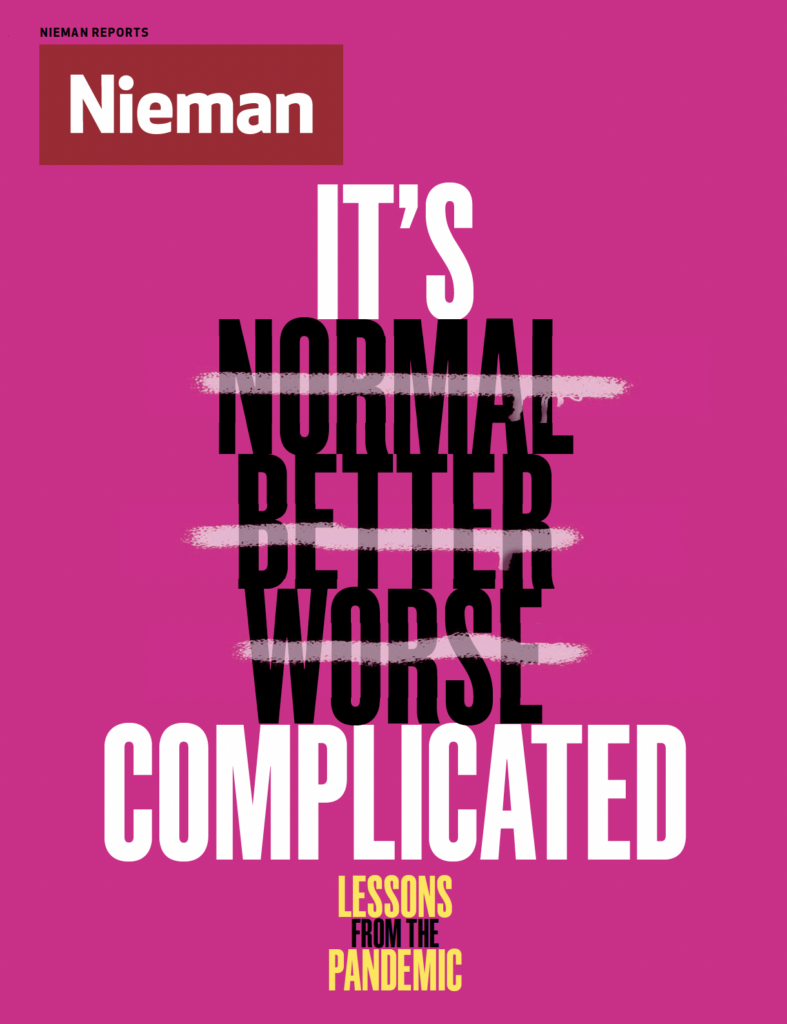There’s a lesson here on how polarization works in America. At its essence, polarization boils down to a split in the narrative. You see the same motion picture but a different storyline. I see action and adventure, and Robbie sees love.
Words and language matter here. Characterizations do, too. How do you describe the demonstrations that happened this past summer? Were they “the protests” or “the riots"? Or was the situation in your town different and more complex?
The events of 2020 — the pandemic, the aftermath of George Floyd’s death, and the election results — will likely color our politics for the next generation. Inequalities and disparities in our society were put in stark relief, with different interpretations of the remedies for them.
We at local newspapers need to keep that context at the forefront of our minds when we think about our readership.
We’ve faced these split narratives in the American story before. In the 1960s, the Civil Rights movement, the assassinations of Dr. Martin Luther King Jr. and John F. Kennedy, and the Vietnam War divided the Baby Boom generation. It was either a time that led to great societal change or moral rebellion, the moment we turned our backs on our troops or fought a war that lacked moral authority.
The split narrative continues in our debates over the symbols left from the Civil War or the significance of the years 1776 and 1619.
The temptation will be strong in the name of clicks and metrics for local news outlets to barter in the hyperbolic rhetoric seen on some cable programs. But resisting these forces in favor of the steeper, harder climb of redoubling our efforts to understand local issues will pay a significant return on investment in due time.
We may not be able to change the way people in our readership view the larger events surrounding 2020, but we can write authoritatively about the year’s events and their lingering effects at the local level. Tools that will be indispensable in this era will be audience surveys, focus groups, and demographic data to help us better understand the way readers view the world. Local news outlets have a unique ability to dig deeper at the ground level into issues affecting their communities. We shouldn’t try to adopt the “one size fits all” approach taken in some national media outlets to hot-button issues.
And there are few things that polarize our country more right now than issues of race. Race is exceptional in its ability to polarize everything from our politics, to our houses of worship, to our own homes.
When it comes to these topics, specificity is your ally. Labels should be applied sparingly, judiciously, and only after great vetting.
I'm not advocating for all coverage to be happy-go-lucky and to avoid controversial topics. I'm arguing that we need to lean into them even harder. The weighty issues our society is grappling with won’t be resolved without talking about them. But I also believe there’s something that needs to factor heavily into our reporting, especially at the local outlets where our subjects are more connected to us than at the national level: grace and empathy.
While a powerful politician or celebrity might merit more scrutiny for doing something racially insensitive or having a minor scuffle with the law, we need to apply different, careful standards to cases involving kids in our communities and those who are not public figures.
We also need to consider our role and responsibilities in setting community narratives. The Boston Globe recently adopted a Fresh Start program to allow people to have stories anonymized or updated to help address historical inequities of coverage.
When we temper our overarching journalistic mission of fearlessly seeking the truth with these values of grace and empathy, we get necessary reader buy-in. That means exercising humility in terms of what we understand about people’s intentions and making sure we make accuracy a non-negotiable priority. Hard-earned experience has shown that we can write the toughest of stories and treat people fairly, earning trust from the reader.
By making sure we’re encapsulating the totality of the debate, we can provide nuanced, equitable coverage — and avoid the pitfalls of split narratives. After all, Titanic is a love story with plenty of action, too.
Austin Bogues is a 2021 Nieman Fellow and reporter at the Asbury Park Press, part of USA TODAY NETWORK.
Lessons from the Pandemic
Hope that the coronavirus is finally being brought under control has given rise to planning for a return to “normal.” But can, or should, journalism return to a pre-pandemic “normal?” Across newsrooms, the way we once covered education, labor, theater—any beat—is unlikely to be sufficient for the moment we are entering. What are the lasting lessons of this time, and how should we do journalism differently? These are the questions to which Nieman Reports is seeking answers in our essay series, Lessons from the Pandemic.




